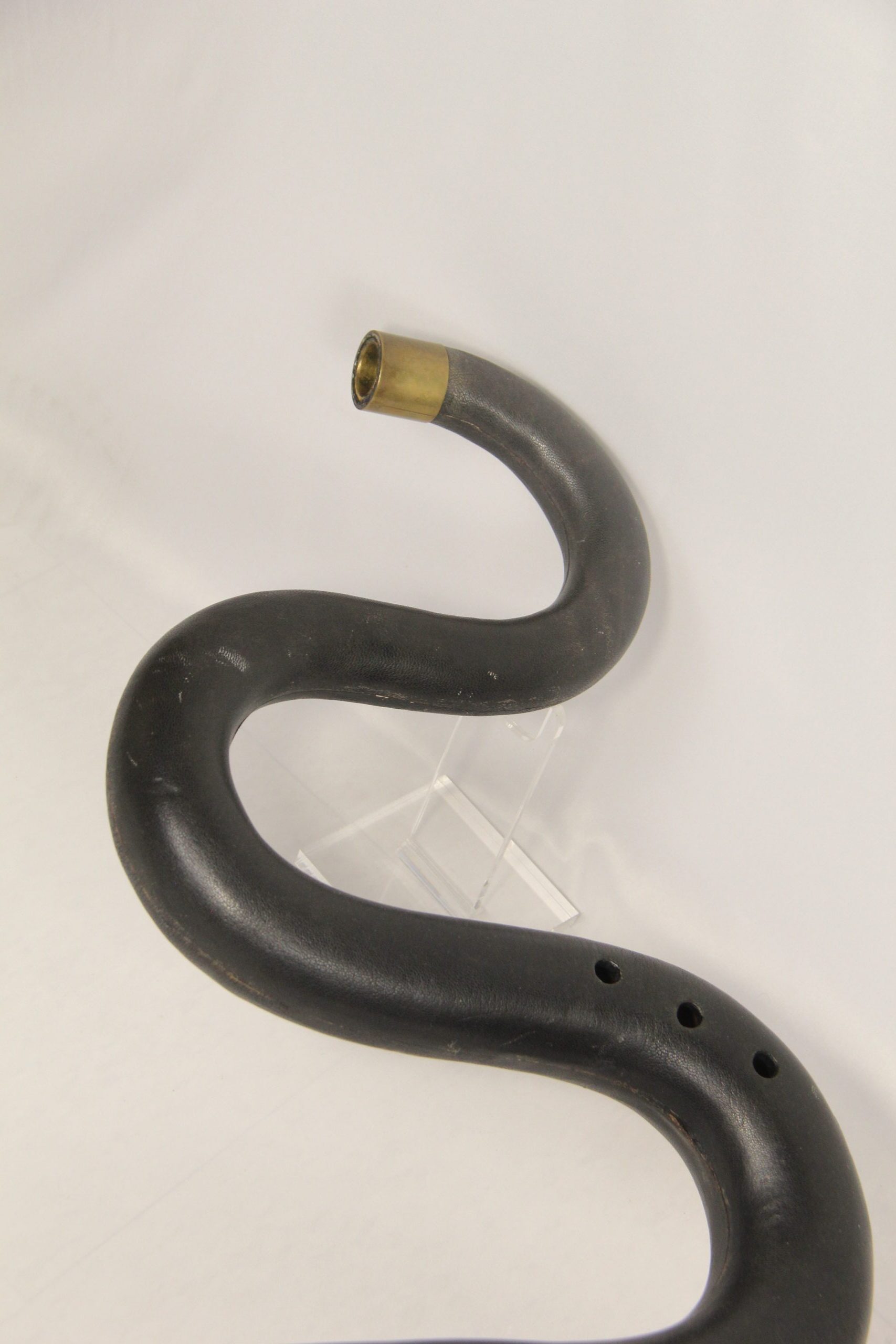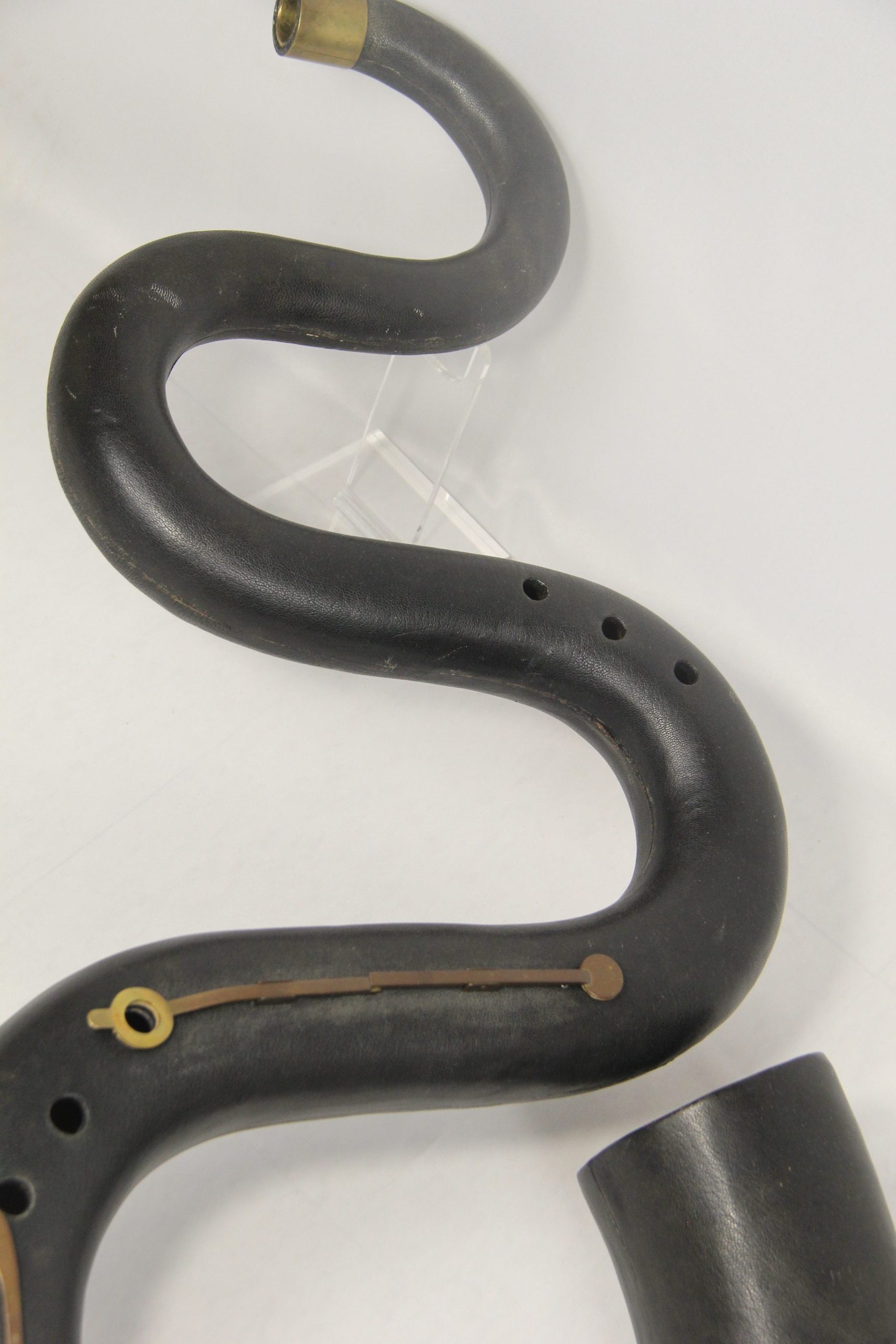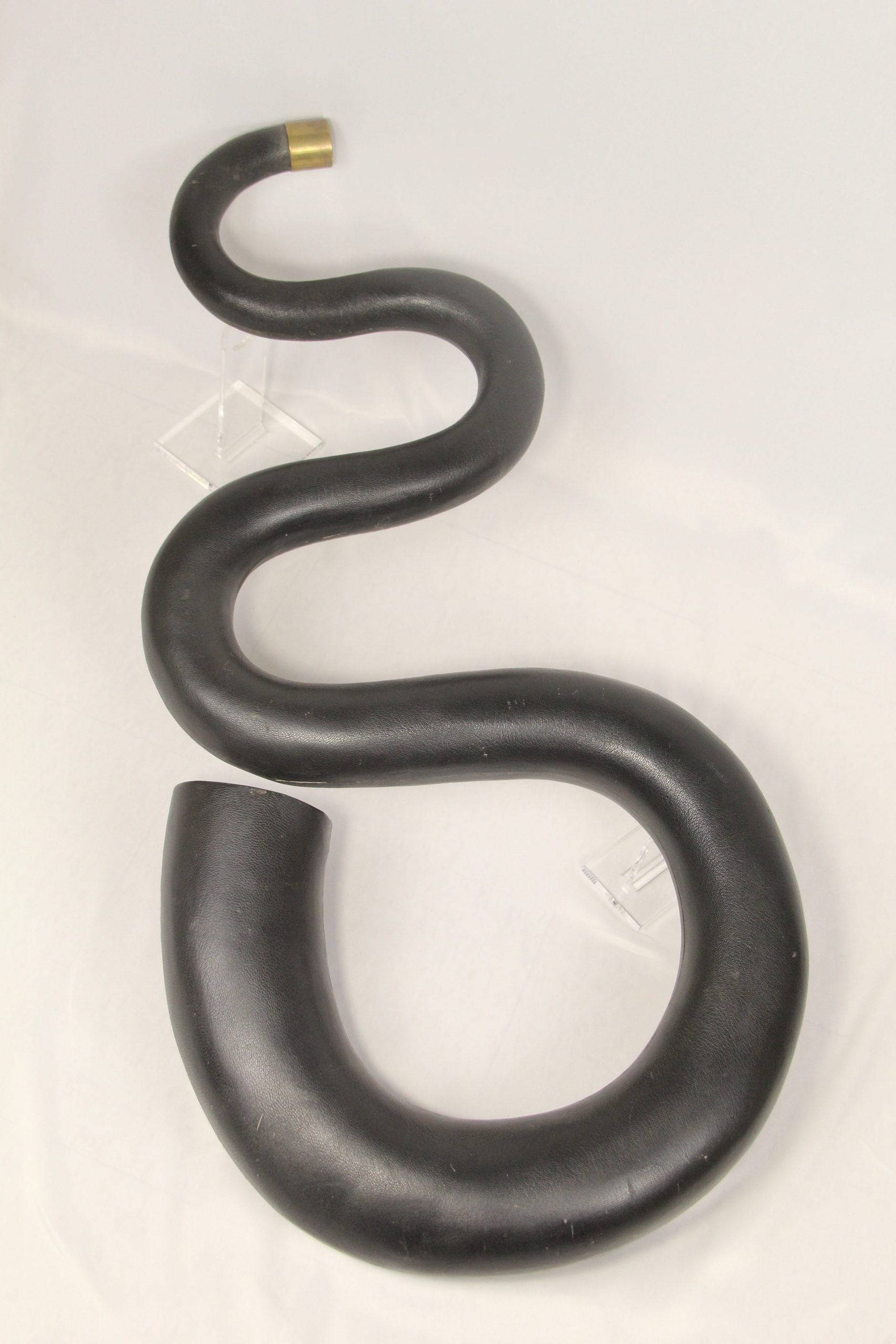Serpent
Details
- Origin: Surrey, England, U.K.
- Date: 1970-1980
- Maker: Christopher Monk
- Collection: E 344
Description
Wood base in a serpentine curve seven to eight feet long, covered in leather. There are brass attachments on the body, and both a brass mouthpiece and endpiece. It has six finger holes on the body, and a conical bore.
This instrument was made as a modern copy of older serpents, in the spirit of the “London Serpent Trio,” a band of serpent players which maker Christopher Monk founded along with Alan Lumsden and Andrew van der Beek. There has never been another serpent trio. This serpent was designed in the fashion of church serpents, the first kind of serpents, except that early church serpents had no finger holes or keys. During the 19th century and onwards, keys were added, and people began experimenting with their material makeup and shape. The serpent can be looked at as the ancestor of the tuba.
The first serpents were thought to have emerged in France, invented by Edme Guillaume in 1590 before expanding across Europe in the 18th century. Serpents were initially made for church use, as their low, resonant sounds paired well with male singers. It was commonly found in English churches that could not afford organs during the 18th and 19th century, and during the middle of the 18th century it was also integrated into English and German military bands.
Sources
Daly, Cédric. “Serpent.” Instruments of the World – Virtual Encyclopedia. Accessed June 15, 2022. http://www.instrumentsoftheworld.com/instrument/158-Serpent.html.
“London Serpent Trio.” Discogs. Accessed June 15, 2022. https://www.discogs.com/artist/3776544-London-Serpent-Trio.
“Serpent.” Encyclopædia Britannica. Encyclopædia Britannica, inc., July 20, 1998. https://www.britannica.com/art/serpent-musical-instrument.
“Serpent.” The Met. The Metropolitan Museum of Art, 2015. https://www.metmuseum.org/art/collection/search/506816.




